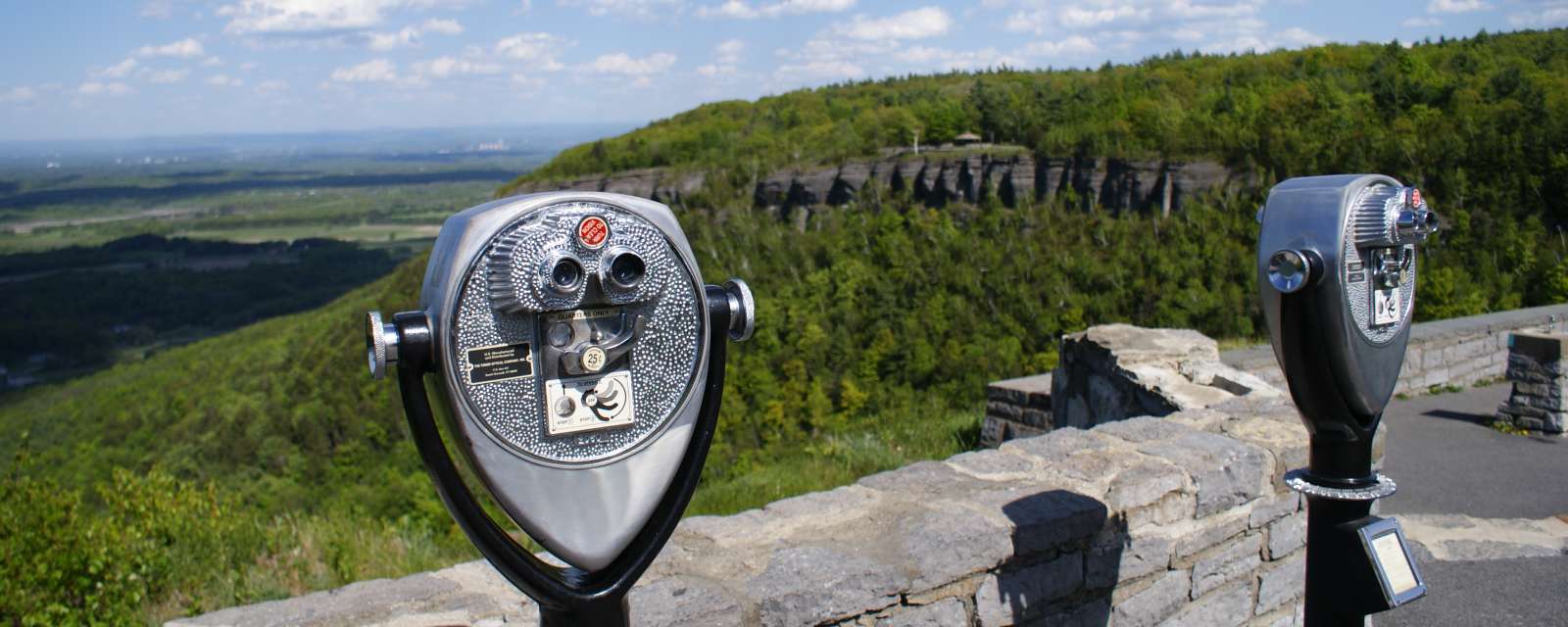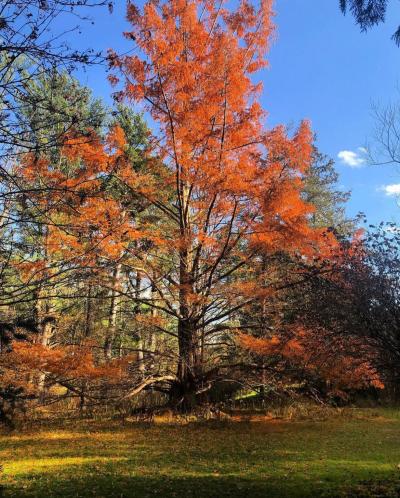
Celebrate Arbor Day! In honor of this national day of tree preservation and appreciation observed on April 26, we’ve collaborated with the Pine Hollow Arboretum (PHA) located in Slingerlands. The Pine Hollow Arboretum is a true nature gem in Albany’s backyard, showcasing trees, shrubs, and other woody plants from around the world. The living tree museum has an awe-inspiring assortment of distinct trees, scroll through this blog to learn about five unique, fan-favorites selected by PHA's Executive Director, Gabrielle Sant'Angelo.
Special thank you to PHA Executive Director, Gabrielle Sant'Angelo and former PHA intern, Laurel Stix for providing background information about each tree. Photos provided by the Pine Hollow Arboretum. Join the Pine Hollow Arboretum for their Arbor Day celebration Propagation 101 with Christian Grigoraskos this Saturday, April 27 at 10 AM!
1. Dawn Redwood Tree
In the late 90's and early 2000's when the Pine Hollow Arboretum was first established, no tree quite caught the eye of PHA's founder like the dawn redwood tree. This founder's favorite tree remains a fan favorite of visitors to the arboretum today. With roots in the arboretum dating back decades before PHA even existed, this original tree was planted in 1968 and has a lifespan extending 400 to 500 years. Native to China, seeds of the dawn redwood were first introduced to the US in 1946. In the fall, its needles turn to a beautiful shade of red. The fluting of the trunk and roots, which stabilize the tree as it grows, help it stand out as the centerpiece of the Metasequoia Field.
2. Paw Paw Tree
Though you may not find them in the grocery store, and you may not have heard of them until now, the paw paw fruit that grows from the paw paw tree has been a part of this area's history for centuries. Native to North America, the fruit is used as a cooking ingredient and for eating raw. Reaching peak ripeness in September or October, the fruit is said to taste like a banana with hints of mango or pineapple. The paw paw is also the largest fruit native to North America with some pieces weighing up to 16 ounces. Visit the Pine Hollow Arboretum to view the cluster of paw paws, a tree species that bears centuries of the area's history, today.
Note: viewing the paw paw fruit when ripe is very cool to see but picking the paw paw fruit is off-limits!
3. Weeping Alaskan Cedar Tree

This beautiful evergreen tree with boughs that droop down in a weeping form is native to the Pacific Northwest Coast. For centuries it has been used as a timber and wood source for indigenous peoples of that area. The weeping Alaskan cedar has been used for everything from homes and canoes to smaller utensils and thread for clothing and blankets. It's known botanically as the Callitropsis nootkatensis derived from the Nuu-chah-nulth people indigenous to Vancouver Island in British Columbia.
4. Bald Cypress Tree
A tree shrouded in mystery; the bald cypress is known for its unusual above ground roots called "knees." Though trees of this species have stood for thousands of years around the country, the purpose of its "knees" remains unknown. The tree continues to bewilder as one of very few trees both coniferous and deciduous. Native to the Southeastern United States, the bald cypress grows in wet, swampy areas and can live for a thousand years. It's a standout visual in the arboretum's All Purpose Swamp.
5. Green Ash Tree

Standing tall in the Magnolia Field, the green ash tree is currently an endangered species. Once a hardy street tree, the green ash is mainly threatened by an invasive beetle from Asia known as the Emerald Ash Borer. Part of the Pine Hollow Arboretum's work includes education about at-risk trees such as the green ash and ways to help protect these species.









